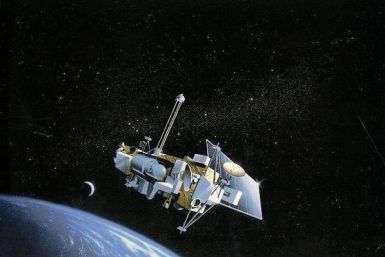A defunct NASA satellite is set to descend into the Earth's atmosphere this weekend, but the U.S. space agency says it has no clue where it will land.
NASA officials on Monday said that they are planning to spend about $1.6 billion for the next two years to strengthen the industry efforts to develop space taxis.
Streaks of green light were captured along the earth’s southern hemisphere in a video as the International Space Station (ISS) hovered over Aurora Australis or Southern Lights.
Almost six years after ceasing operation, NASA's defunct 6.5-ton Upper Atmosphere Research Satellite is expected to plummet to Earth on Friday. But the U.S. space agency still has no idea as to where exactly it would fall.
A defunct NASA satellite is expected to plunge back to earth, raising concerns that blazing hot debris may shower down on the unsuspecting terrestrial population.
NASA has a plan to get astronauts back into space.
Temperatures will be seasonal this week with some areas having a chance of rain and slight odds of falling NASA satellite debris.
A defunct NASA satellite is expected to re-enter Earth's atmosphere on Friday, Sept. 23, according to the U.S. space agency.
Science teacher James Drake compiled 600 images to create a time-elapsed 60 second video of what it feels like to fly around the world from space from the perspective of an astronaut.
Science teacher James Drake compiled 600 images to create a time-elapsed 60 second video of what it feels like to fly around the world from space from the perspective of an astronaut.
Ever wonder what astronauts see when flying over the Earth daily? Thanks to a scientist, now you can see what it feels like to fly over the planet in a newly released video.
The Russian Soyuz capsule carrying the three out of six crew members returning from the International Space Station touched down safely on Friday at the central grasslands of Kazakhstan, but not without a drama.
A dead NASA satellite will be plunging back to the Earth in about a week, around September 23, though there is absolutely no idea as to where it is going to fall.
NASA's 6.5-ton Upper Atmosphere Research Satellite would fall to Earth next week after the end of a productive scientific life.
Three of the six astronauts who were stationed at the International Space Station, began their return to Earth on Friday aboard a Soviet-era capsule.
Three Nasa astronauts will be returning to Earth on Friday after spending more than five months on the International Space Station (ISS).
The Russian Space Agency on Tuesday announced that it is postponing the launch of the latest space station crew to Nov. 12. This gives NASA reasons to worry, since the situation is such that NASA itself has no space shuttles to take the astronauts to the International Space Station, and it relies completely on Russia for the same.
Russian Space Agency Roscosmos is delaying the launch of the next manned Soyuz mission until Nov. 12 because of a recent accident involving a supply ship.
A defunct satellite poised to fall back to Earth will make its final plunge during the last week of September, NASA officials say.
National Aeronautic and Space Administration (NASA) is offering processed space shuttle tiles and astronaut food to eligible schools and universities to preserve history.
An out-of-use NASA science satellite will plunge back to Earth soon, sparking concerns that some debris might shower down on populated areas.
A defunct NASA satellite is expected to re-enter Earth's atmosphere by early October, sparking concerns that some debris might shower down on populated areas.































